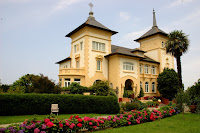One Monday Morning

Today is May 2nd. It's an important date in Spanish, and Madrid history. It is the reason that the famous Goya painting at the left exists. Years ago I wrote this article for the old TIM magazine. ---------------------------- The 2nd of May 1808. A Monday morning in Madrid. We've had French soldiers swaggering all over the city since March. I blame the old King, King Carlos IV, when he let that lackey of his, Godoy, do a deal with Napoleon to invade Portugal. Imagine that! Our troops fighting alongside all those Frenchy gabachos. Why would we side with that lot after the way they let us down at Trafalgar? Those cowardly Frenchy sailors ran away leaving our lads in the lurch and letting that one eyed, one armed Brit dwarf sink our navy. Lot of good it did the old boy anyway. Napoleon forced him to abdicate in favour of that son of his, Fernando VII, Now old Boney has both our Kings in France at Bayona planning to do goodness knows what with them. This morning's rumou...



